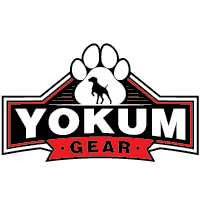Understanding Canine Aggression
Canine aggression can manifest in various ways, such as growling, snapping, lunging, and biting. It can be triggered by fear, territoriality, possessiveness, or frustration. It's vital to understand the root cause of the aggression to apply the most effective training strategies. Always consult with a professional dog trainer or veterinarian to identify any underlying health issues contributing to the aggressive behavior.
1. Desensitization and Counter-Conditioning
Desensitization involves gradually exposing the aggressive dog to the stimulus that triggers its aggression at a level where the dog remains calm. Counter-conditioning pairs this exposure with a positive experience, such as treats or praise, to change the dog's emotional response to the trigger.
Steps:
- Identify the trigger and the distance at which the dog begins to react.
- Keep the dog calm and at a safe distance from the trigger.
- Gradually decrease the distance over time, rewarding calm behaviors with treats and praise.
- Repeat the process consistently, increasing the level of exposure as the dog becomes more comfortable.
2. Positive Reinforcement Training
Positive reinforcement involves rewarding desired behaviors to encourage their repetition. It’s a powerful tool in managing aggression as it focuses on rewarding calm and non-aggressive behaviors.
Steps:
- Use high-value treats, toys, or verbal praise to reward calm and appropriate behavior.
- Avoid punishing aggressive behavior, as this can increase fear and anxiety, exacerbating the aggression.
- Consistently reinforce positive behavior, ensuring that the rewards are directly linked to the desired behavior.
3. Management and Avoidance
Preventing aggressive incidents through effective management and avoidance strategies is critical during the training process. This might include using barriers like baby gates, crates, or muzzles to control the environment and interactions.
Steps:
- Identify and avoid scenarios that trigger your dog's aggression whenever possible.
- Use tools like leashes, harnesses, and muzzles to safely manage your dog in potentially stressful situations.
- Keep the environment calm and predictable to reduce stress and anxiety.
4. Obedience Training
Teaching basic commands like 'sit,' 'stay,' 'leave it,' and 'come' can help establish control and improve the dog's focus and impulse control. Regular obedience training can build a positive relationship between the dog and owner, based on trust and respect.
Steps:
- Start with simple commands in a low-distraction environment.
- Gradually increase distractions as the dog becomes proficient in following commands.
- Reward compliance with commands using treats, praise, or play.
5. Seek Professional Help
If you're struggling to manage your dog's aggression, it may be time to consult a professional dog trainer, behaviorist, or veterinarian. These experts can offer personalized advice and strategies tailored to your dog's specific needs.
Benefits:
- Professional trainers can provide structured training programs and hands-on guidance.
- Veterinarians can rule out medical issues that might contribute to aggression.
- A behaviorist can develop a comprehensive behavior modification plan.
Conclusion
Training an aggressive dog requires patience, consistency, and a deep understanding of canine behavior. By implementing strategies like desensitization, positive reinforcement, management, and obedience training, you can help your dog overcome aggressive tendencies. Always prioritize safety and seek professional help when necessary to ensure the well-being of both you and your dog. With dedication and the right approach, significant improvements can be made, leading to a more harmonious and safer environment for everyone involved.

